Rotator Cuff Surgery in Dallas & Frisco, TX
Shoulder Arthroscopy, Open Repair, Mini-Open Repair
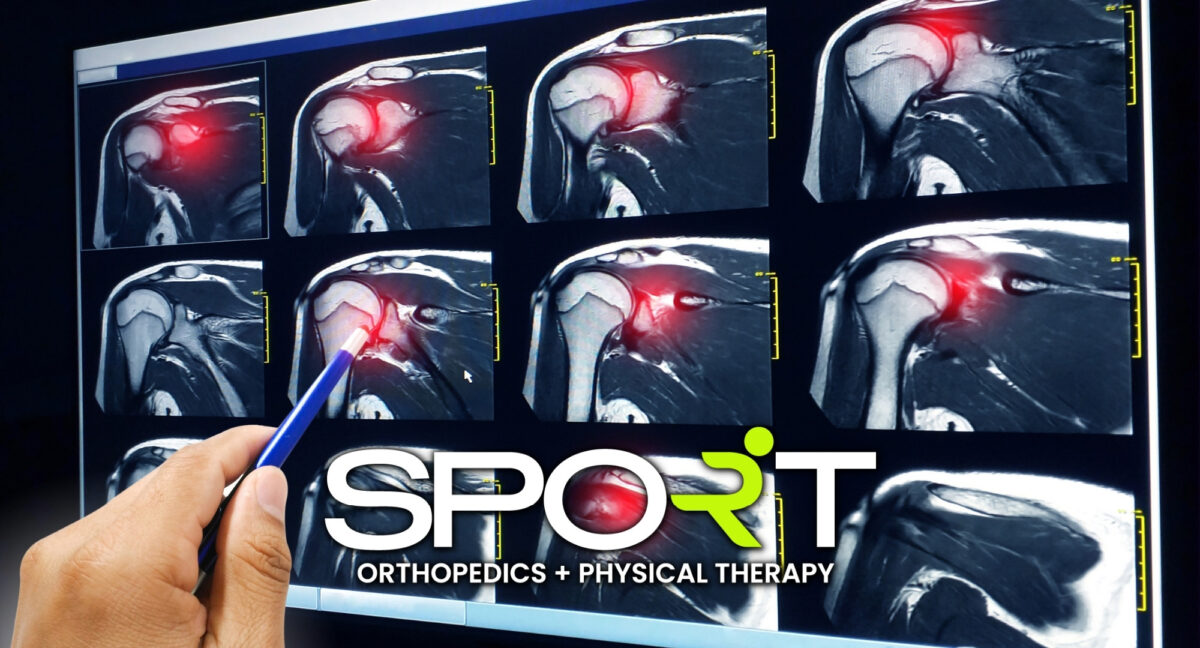
Our Dallas orthopedic surgeons at SPORT Orthopedics and Physical Therapy regularly diagnose and treat rotator cuff tears. While our experience is vast, we treat every patient with care and attention. Both your diagnosis and treatment plans will be customized to the fullest extent, meeting your needs as a patient. We’re here to treat your rotator cuff injury and get you back to your active lifestyle. To schedule an appointment with an orthopedic surgeon or Dallas physical therapist, please call 469-200-2832. You can also fill out our online intake form.
What Is Rotator Cuff Repair?
The rotator cuff consists of muscles and tendons that hold your shoulder in place and enable you to lift your arms and reach upward. A rotator cuff tear can happen if you fall on an outstretched hand, or it may develop over time due to overuse from repetitive motions (tendonitis) or simply from aging.
The most common symptoms of a rotator cuff injury are recurrent pain, limited range of motion, and muscle weakness. Suppose conservative treatments such as rest, nonsteroidal anti-inflammatory medications (NSAIDs), Dallas physical therapy, or cortisone injections do not help. In that case, you may need surgery to repair the muscles and tendons, relieve pain, and restore the function and flexibility of your shoulder.
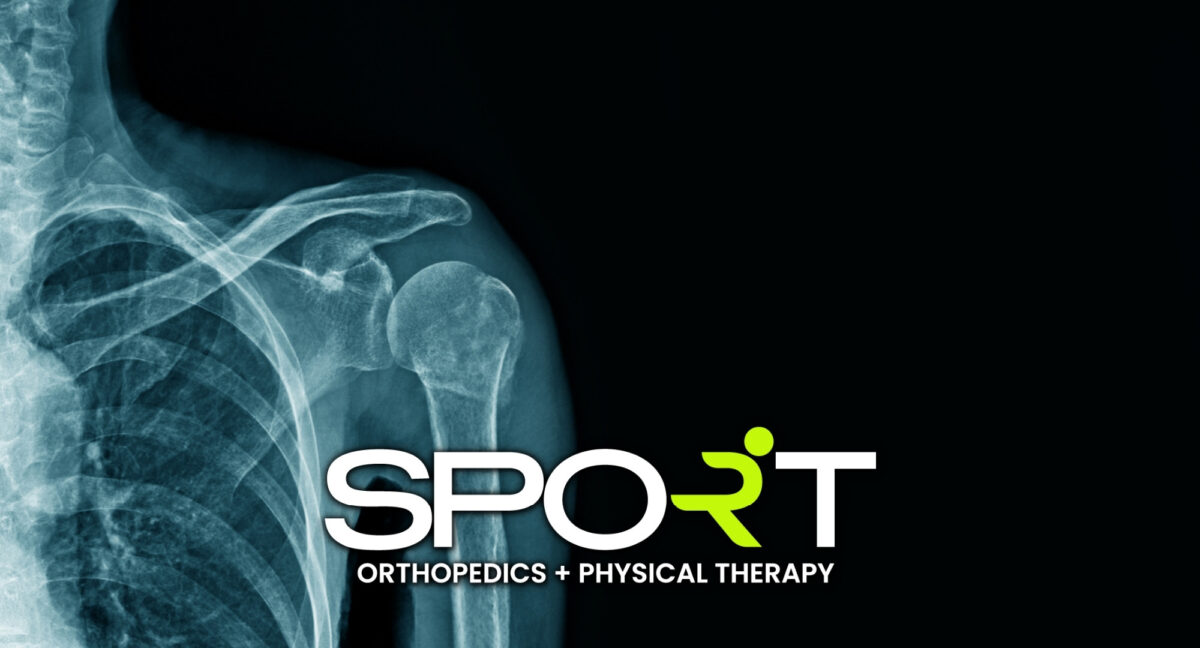
How Do Rotator Cuff Injuries Happen?
The complexity of the shoulder, while very useful for movement, also makes it more prone to injury and discomfort. Thus, injuries to the rotator cuff tendons are common. Most of these injuries happen because of trauma, tissue degeneration, or shoulder impingement. Below, we explain the most common causes of rotator cuff injuries.
- One traumatic event resulting in acute injury: This could be a fall onto an outstretched arm, lifting heavy weights, or participating in activities that put a lot of strain on the rotator cuff.
- Degeneration over time: The rotator cuff naturally degenerates, much like the tissue in the rest of our body. Especially for those over 40, we recommend caution during certain activities. Small rotator cuff tears form as time passes, making the shoulder more prone to serious tears. Large tears can occur without a traumatic event.
- Shoulder impingement: Impingement is an all-encompassing term for the pinching of muscles, tendons, and other soft tissues that can be painful. Usually, these tissues are pinched between the scapula’s acromion and the top of the shoulder’s ball-and-socket joint. It is often caused either by structural issues or functional issues. This is similar to pinched nerves and anterior ankle impingement.
- Repetitive motion injuries: Athletes who commonly experience rotator cuff tears are baseball pitchers. Because of how their arms move while throwing, they put themselves at risk for this injury.
What Is Shoulder Arthroscopy?
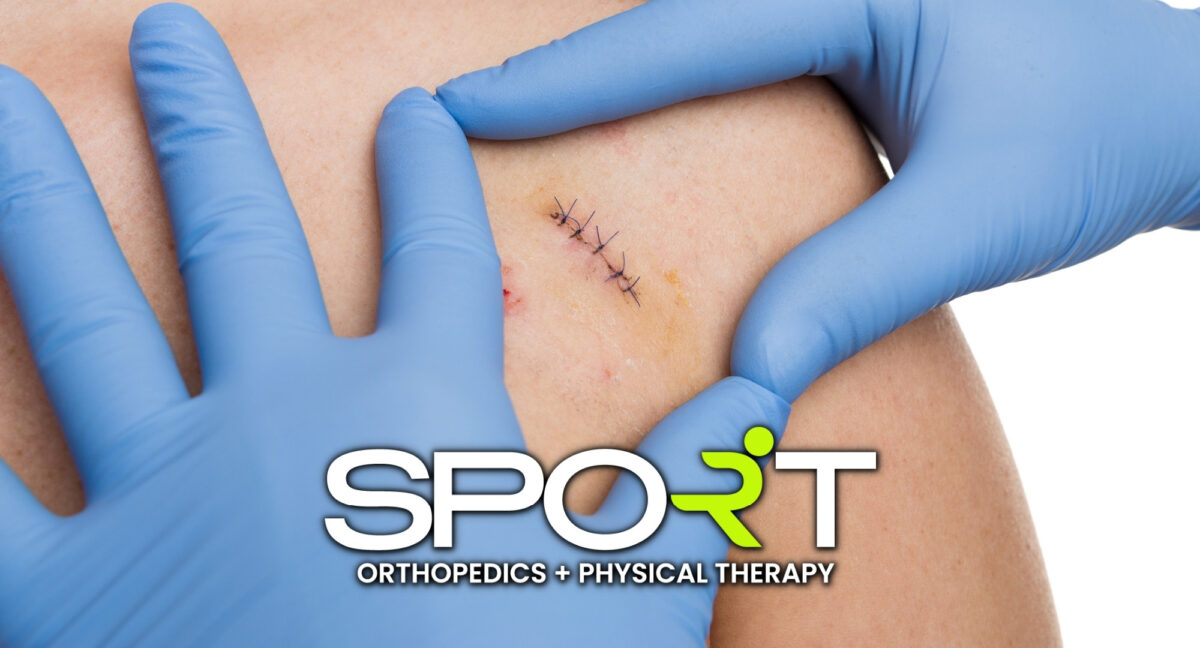
One of the many types of surgical procedures we offer is shoulder arthroscopy. Not only do we use it to treat various shoulder injuries, but we also use it to aid with diagnosis and examination of the joint.
During an arthroscopic procedure, your surgeon makes a small incision through which to insert a small camera or arthroscope. They watch the video monitor from the camera on a screen in the operating room, guiding their instruments.
Because these surgical tools are so small, your surgeon will create small incisions rather than large cuts to insert them. This results in less pain and a shorter recovery time for patients. Since its inception in the 1970s, shoulder arthroscopy has helped improve shoulder surgery immensely.
When Rotator Cuff Surgery Is Recommended
Suppose you have rotator cuff pain that keeps you up at night and you want to learn how to relieve rotator cuff pain at night. At first, your doctor is unlikely to recommend surgery to solve that problem. However, conservative treatments might just do the trick.
While arthroscopy is an excellent option for shoulder injuries, it’s not always necessary to undergo surgery to treat your pain and injury. Unless you have very severe rotator cuff problems, your doctor might recommend non-invasive treatments before surgery.
Early damage to the rotator cuff can be improved or even reversed without surgery. After you experience a minor shoulder injury or shoulder weakness, you can try the RICE method to improve your symptoms. Rest, Ice, Compression, and Elevation are your best friend for minor shoulder problems, as well as problems in other areas of the body.
You can also try anti-inflammatory medications relieving pain and a physical therapy program to restore your range of motion before undergoing orthopaedic surgery. However, if your symptoms last longer than 3-6 months, it’s time to start considering surgery.
We also recommend surgery if patients experience a sudden shoulder injury that results in shoulder weakness. However, it’s important to note that surgery cannot always wholly reverse the damage that occurs over time to your shoulder. Regardless of whether you opt for surgery or not, it is likely that you will need physical therapy and rehabilitation of some kind.
How Long Does It Take to Recover from Rotator Cuff Surgery?
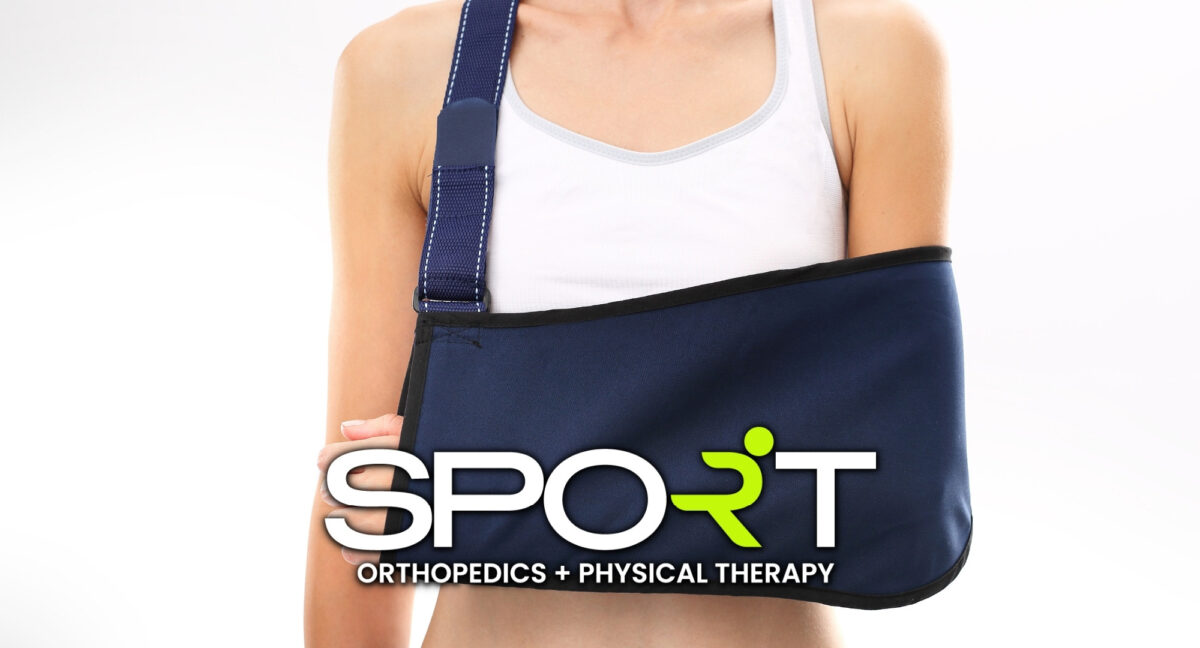
Generally, it will take around six to eight weeks for your tendon to heal from the surgery. However, the rotator cuff surgery recovery timeline varies depending on the size and severity of the tear. We recommend asking your doctor about your approximate recovery time.
Small tears can take around four months to heal, while larger tears can take around six months. Very large tears take anywhere from six months to a year to heal fully. Many patients can return to their average activity level after about 12 weeks. However, intense sports should wait until around 4 to 6 months after surgery. This ensures that you can achieve your full strength and a full range of motion.
What Is the Success Rate of Rotator Cuff Surgery?
As a widespread procedure, rotator cuff repair surgery has a success rate of over 95% for smaller tears. For two tears, the success rate still sits at about 70%. If you leave a rotator cuff tear untreated, it could become a more significant problem. However, even huge tears can still benefit from surgery.
What Is the Risk of Waiting for Rotator Cuff Repair?
It’s always important to treat an injury before it has the chance to get worse. Tears tend to get larger as more time passes before they receive treatment. When these tears get bigger, they will benefit less from surgery than smaller tears would.
Therefore, having a smaller tear treated before it gets larger is a good idea. If you choose to delay surgery, the tear could progress into a larger one that is more difficult to repair. However, you can always schedule sessions with a physical therapist in Dallas to avoid surgery. If your injury does not respond to physical therapy, we may still recommend surgery.
How Is Rotator Cuff Surgery Performed?
A torn tendon in the shoulder is generally treated through arthroscopic repair. Shoulder arthroscopy involves small incisions made by your surgeon rather than an open repair. Through those small incisions, the surgeon inserts the arthroscope and moves it to the site of the tear.
Then, they use special surgical instruments to repair rotator cuff tears without causing damage to the surrounding shoulder muscle or causing nerve injury. Most patients undergo regional anesthesia and partial sedation rather than general anesthesia.
Arthroscopy allows surgeons to identify all arm and shoulder area problems, such as bicep tendonitis and labral tears. Once the rotator cuff problem is identified, the surgeon inserts the arthroscope into the subacromial space under the torn rotator cuff. Then, the torn tendon is reattached to the bone through sutures and anchors. This is similar to both the Bankart repair and Latarjet procedure.
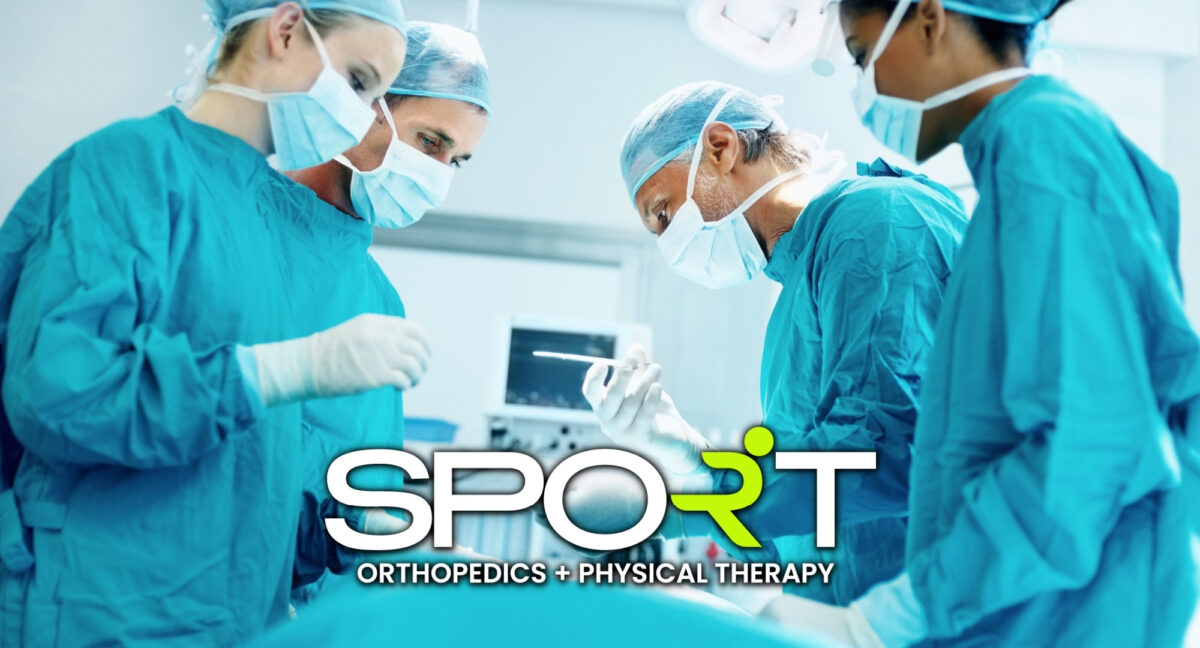
Surgical Repair Options
There are three main options for surgically treating a torn rotator cuff tendon. While all techniques have their pros and cons, they still achieve the goal of repairing tendon tears. Your surgeon will determine which technique is best for your situation. The most common techniques are open repair, all arthroscopic repair, and mini-open repair.
- Open Repair: For large or complicated tears, your orthopedic surgeon will likely opt for a traditional open surgical incision. They will detach one of your shoulder muscles to better access the rotator cuff tear. Then, they remove bone spurs from the shoulder joint before repairing the tendon.
- All Arthroscopic Repair: The technique used to cause minimal trauma and repair injured tendons is shoulder arthroscopy. It is usually an outpatient procedure, as it is the least invasive way to fix a partial tear.
- Mini-Open Repair: This is a newer technique than traditional open repair, and the incision is much smaller. It uses arthroscopy for things like bone spur removal, then uses the open incision to treat the rotator cuff tear itself.
Non-Surgical Repair Options
Tendon repair can also happen without surgery. Through physical therapy and other techniques, doctors can repair minor shoulder injuries.
- Occupational or physical therapy: Our skilled therapists help you regain shoulder function and shoulder strength through various exercises at our facility. Many doctors even prefer to start with this instead of first considering surgical treatment options.
- NSAID medications: Oral medications such as acetaminophen, naproxen, and ibuprofen aid with shoulder pain and inflammation in the affected arm.
- Steroid pills or injections: Your doctor may recommend steroids for the shoulder joint for more severe pain or chronic pain.
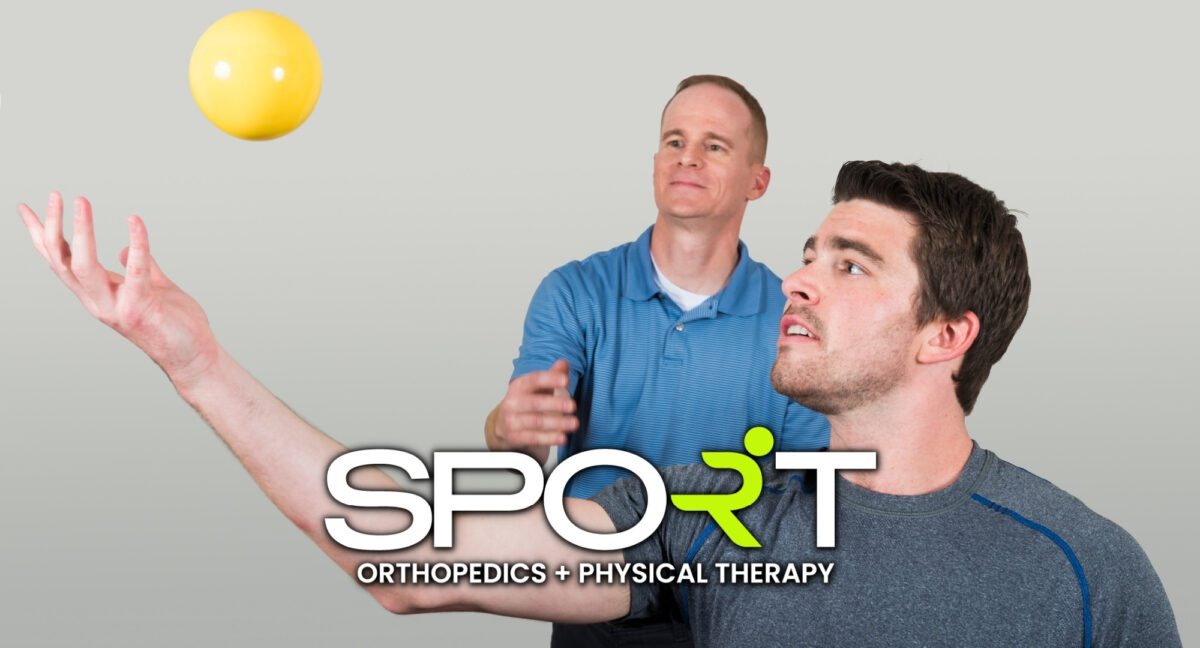
What Should I Expect from Postoperative Physical Therapy?
In most cases, patients undergo four phases of physical therapy to recover. For the first two to eight weeks after surgery, you will likely wear a shoulder immobilizer or a sling and work closely with your physical therapist on passive stretching. Then you will work on active stretching. Finally, you will work on strengthening, weight-bearing, and getting back to normal shoulder movement.
What Should I Do After Rotator Cuff Repair?
One of the most important things you can do is take good care of yourself while recovering at home. You’ll likely feel very tired for a few days after the surgery. Your shoulder will be at least a little swollen. You may also notice some skin discoloration around the incision. Any swelling in the hand and arm should dissipate after a few days. The following are some helpful tips for caring for yourself at home.
- Rest whenever you feel tired. Sleep helps with recovery. When you sleep, however, it should either be in a reclining chair or with your upper body raised by a few pillows.
- Walk a little each day. This will help increase blood flow, decrease the possibility of blood clots, and prevent constipation or pneumonia.
- Wear your arm sling or another device to keep your arm immobilized. Follow your doctor’s instructions on wearing a sling and when it’s okay to loosen it.
- Only use your affected arm for after-surgery exercise, eating, drinking, or writing. However, you should only move that arm from the elbow and wrist, not the shoulder.
What Are the Potential Complications?
As with any surgery, repairing a partial or complete rotator cuff tear has its own list of potential complications. The following are some potential risks that your doctor will warn you about before your surgery.
- General anesthesia risks
- Risk of stroke, pneumonia, heart attack, and blood clot
- Nerve damage and damage to surrounding blood vessels
- Infection
- Stiff shoulder
- Occasionally, some patients tear the repaired tendon tissue.
What Is the Best Way to Deal with Postoperative Pain?
It is common to feel pain after rotator cuff tendinopathies. However, there are a few ways to reduce or manage shoulder pain and discomfort in the upper extremity:
- Mild levels of activity each day help boost blood flow and prevent stiffness.
- If you struggle with constipation after your procedure, don’t worry. This is a normal side effect, and it can be helped with daily fiber supplements.
- Follow your doctor’s instructions about pain medications. Only take them as directed to manage your pain. If they prescribed antibiotics, also take those as directed.
- Keep all your bandages and incisions clean and dry throughout recovery.
- Ice and cold packs applied to the rotator cuff muscles for 20 minutes at a time can help with pain and swelling. Do this every few hours, and make sure to have a cloth or towel between your skin and the cold pack.
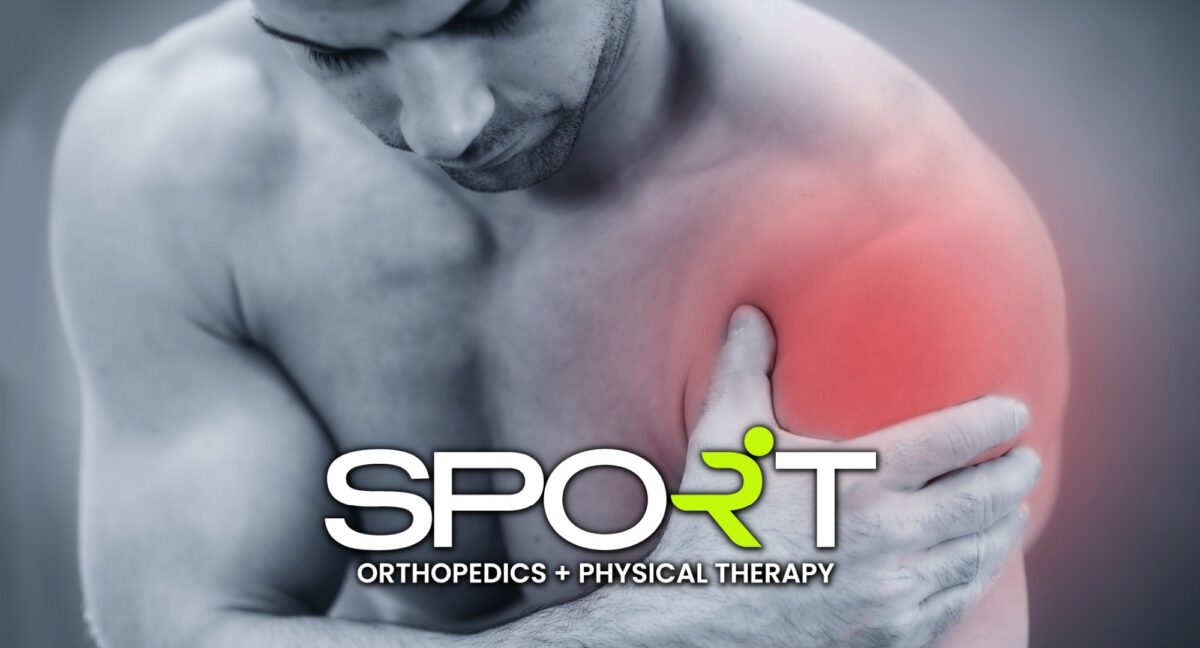
Rotator Cuff Repair FAQs
Do You Need Surgery for a Partial Rotator Cuff Tear?
Not necessarily. Most partial tears are treated without surgery, unlike a complete tear. Instead, your treatment will focus more on physical therapy, maintaining and improving your range of motion, and preventing shoulder stiffness. However, when non-invasive treatments don’t seem practical, surgery may be your only option.
How Many Weeks of Physical Therapy Do You Need After Rotator Cuff Surgery?
We usually recommend that patients wear an arm sling for at least two to three weeks. Additionally, most patients can start their physical therapy a week after surgery. This physical therapy plan could span over three to four months. After at least six weeks have passed, your doctor will assess whether you’re ready for strengthening exercises.
How Do You Choose a Doctor for Rotator Cuff Surgery?
The most important aspect to look for in a surgeon is experience with shoulder surgery and rotator cuff repairs. It is also preferable to see someone with a fellowship in sports medicine. Dr. Berry has years of experience treating shoulder issues and is highly skilled in multiple types of arthroscopy, such as ankle arthroscopy, elbow arthroscopy, hip arthroscopy, knee arthroscopy, and wrist arthroscopy.
What Are the Best Exercises After Rotator Cuff Repair?
The best way to determine the appropriate exercises for your situation is to speak with a licensed physical therapist. They can advise you on the proper techniques, as well as which movements will help or hurt your recovery.
What Is the Average Recovery Time for Rotator Cuff Surgery?
It usually takes around six to eight weeks for the tendon to adhere to the bone completely. Keep in mind that recovery times can increase with larger tears. Small tears need around four months to heal completely, while large tears might need about six months. Massive tears that are very severe could require an entire year.
Many patients return to their normal activities around 12 weeks after their surgery. However, you’ll want to avoid sports or vigorous physical activity until your doctor gives you the all-clear. Your ultimate goal is to recover your strength and movement range.
How Serious Is Rotator Cuff Surgery?
It ultimately depends on the technique your surgeon uses to perform repairs. If the all arthroscopic method is used, the surgery is less serious than an open repair. However, all surgeries have a certain degree of risk. Speak to your surgeon about any questions or concerns you may have about the procedure.
Is Rotator Cuff Repair Painful?
During the procedure itself, you should not feel any pain or discomfort. You will most likely be asleep for the entire procedure. If the anesthesiologist gives you a nerve block, this will numb your shoulder. These blocks last until after you wake up, so you likely won’t feel much pain or discomfort once you wake up.
How Long After Rotator Cuff Repair Can You Sleep in a Bed?
You can technically sleep in your bed the first night after your procedure. However, you should not lie flat on your back. Instead, use two or three pillows to sleep as close to a 45-degree incline as possible. It may also be more comfortable to sleep in a recliner rather than a bed for the first few weeks.
Contact SPORT Orthopedics and Physical Therapy Today
Our Texas sports medicine surgeons are experts at rotator cuff repair at Sports Physicians Orthopedics and Rehabilitation of Texas (SPORT). We may use an open surgical approach, arthroscopy, or a combination of both to repair a torn rotator cuff. Rotator cuff repair may also include shaving off bone spurs that are pinching the shoulder. Our orthopedic surgeons will assess your injury and determine which surgical procedure is best for you. To schedule an appointment with us, please call 469-200-2832 or fill out our online intake form.


